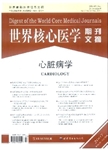ST段抬高的心肌梗死患者溶栓治疗后的心衰程度、治疗及结局
Severity of heart failure, treatments, and outcomes after fibrinolysis in patien ts with ST-elevation myocardial infarction作者机构:TIMI Study Group Brigham and Women’s Hospital Cardiovasc. M ed. 350 Longwood A. Boston MA United States
出 版 物:《世界核心医学期刊文摘(心脏病学分册)》 (Digest of the World Core Medical Journals(Cardiology))
年 卷 期:2005年第1卷第2期
页 面:31-31页
学科分类:1002[医学-临床医学] 100201[医学-内科学(含:心血管病、血液病、呼吸系病、消化系病、内分泌与代谢病、肾病、风湿病、传染病)] 10[医学]
主 题:心衰程度 ST段抬高 β-阻滞剂 血管成形术 血管紧张素 血管重建术 肌酐清除率 多变量模型
摘 要:Aims To define the clinical characteristics, co morbidities, treatment, and c linical outcomes of patients with varying degrees of heart failure(HF) complicat ing ST elevation myocardial infarction (STEMI), and to identify patients at hig h risk for HF following fibrinolysis. Methods and results 15,078 STEMI patients enrolled in a worldwide fibrinolytic trial (InTIME II) were categorised into on e of four hierarchical, mutually exclusive groups of HF: shock (n=719, 5%); sev ere HF (n=1082, 7%); mild HF (n=1619, 11%); no HF (n=11,658, 77%). In a multi variable model, anterior MI (OR 1.8, 95%CI [1.6; 1.9]), age ≥65 (OR 1.8 [1. 6; 2.0]), prior HF (OR 3.3 [2.6; 4.2]), and creatinine clearance 60 mL/min (OR 1.8 [1.6; 2.1]) were the four most powerful correlates of HF. Although 30-daymor ta litywas sixfold higher for patients with HF(18.9%vs. 3.1%, p 0.0001), these p atients were less likely to undergo angiography(30%vs. 40%, p 0.0001) and rev ascularisation(19%vs. 25%, p 0.0001), than patients without HF. Likewise, ang iotensin inhibitors and β blockers were not optimally utilised in patients wi th HF following MI. ConclusionsDuring the index admission following fibrinolysis 23%of patients had HF. Despite a higher risk profile, patients with more sever e HF were treated less aggressively than patients without HF.



